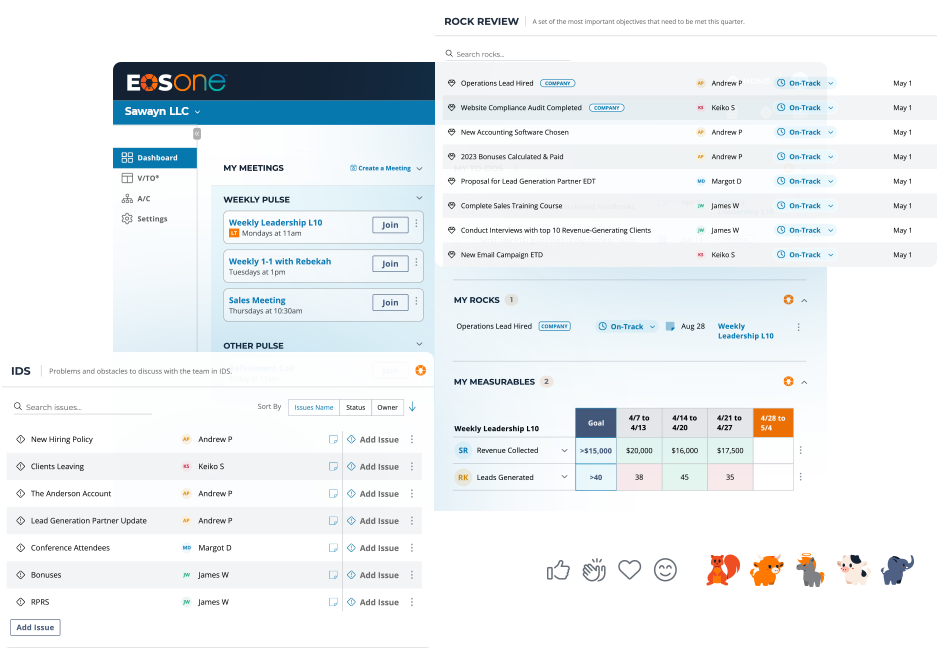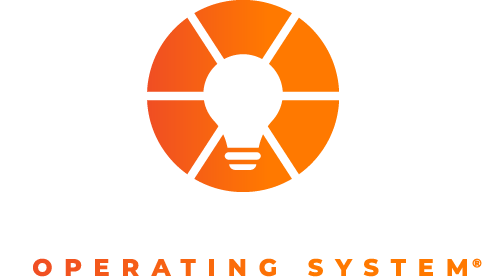“We know what we need to do. We just can’t seem to get it done.”
This is a common lament from leaders of companies I work with, and I understand their frustration. Before Running on EOS™, I led a team of 650 people who all worked hard but often failed to produce results. We had talent. We had a clear vision. What we lacked was discipline and accountability to create traction.
Then I learned something about business execution: Having talent and a great vision isn’t enough—you need the tools to get there. Even the best strategy fails without proper execution and a clear focus on priorities.
The Real Cost of Unclear Priorities
A strong vision helps a team understand the organization’s goals. Leaders bring this to life by painting a clear picture of where the company is going and how they’re going to get there. Daily activities should inch the business closer to these longer-term goals. That takes breaking the big picture down into manageable steps, something we call quarterly Rocks in EOS®.
Without every team member responsible for Rocks and a clear way to hold them accountable for completing them, you often see a familiar pattern:
- Priorities shift weekly (sometimes daily or hourly!)
- Important initiatives get lost in the day-to-day chaos
- Meetings end with no real actions
- Quarter after quarter, key objectives remain unmet
The real cost of unclear priorities extends far beyond missed opportunities. The churning also creates a slow erosion of team morale as good people grow frustrated trying to navigate unclear priorities and shifting targets.
What Traction® Really Means
The Traction Component® helps people focus on the most important things (Rocks) while providing the framework for discipline and accountability. The difference between a “busy” team spinning its wheels and a productive team is traction.
To create traction in your business, The Traction Component® includes The Meeting Pulse® to keep team members focused and accountable for completing their Rocks each quarter.
The Meeting Pulse®
One of the most transformative aspects of the Traction Component® is the rhythm baked into The Meeting Pulse®. I’ve seen firsthand how this consistent rhythm transforms great visions into equally great results in the Grand Rapids businesses I’ve coached. Here’s how it works:
The Weekly Level 10 Meeting®
A great Meeting Pulse starts with the Level 10 Meeting®. These aren’t your typical meetings that could’ve been an email with no real purpose and no real end time. Level 10 Meetings® are held at the same time each week; they start on time and they end on time.
The most powerful aspect of these focused, 90-minute weekly sessions is that they follow a set agenda:
- Segue (5 minutes)
- Scorecard review (5 minutes)
- Rock review (5 minutes)
- Customer/Employee headlines (5 minutes)
- To-Do list review (5 minutes)
- IDS® (Identify, Discuss, Solve) (60 minutes)
- Conclude (5 mins)
The Quarterly Meeting
Every 90 days, leaders pause from the daily grind and take time to work on the business. During the Quarterly Meeting time, the team reviews the previous quarter, reaffirms longer-term goals, and establishes the next quarter’s Rocks. They spend the rest of the day tackling key issues.
Most organizations struggle with producing consistent results. I recently worked with a manufacturing company that struggled with competing priorities. By focusing on just 3-7 Rocks for one quarter, they accomplished more in 90 days than they had in the previous year.
The Annual Planning Session
Once a year, the team takes an even bigger pause. Instead of a Quarterly Meeting, they hold a two-day Annual Planning Session. During this time, teams review both the last quarter and the past year. They’ll also plan team health activities, conduct an Organizational Checkup, and complete a SWOT (strengths, weaknesses, opportunities, threats) analysis.
The team will also review long-term goals and update their 3-year picture and 1-year goals. Afterward, they set new Rocks for the next quarter and IDS the most pressing issues.
Practical Implementation
I’ve worked with leadership teams throughout the Grand Rapids area to help their companies run on EOS®. To increase their success, I recommend they start doing a few things well and avoid some common pitfalls to maximize their results.
Three Steps to Start Strong
In my experience, companies that start strong in these three disciplines will see results faster:
- Begin with a weekly Level 10 Meeting® – Hold a weekly Level 10 Meeting, on the same day and at the same time every week, using the set agenda. No sidebar conversations or one-off meetings. No exceptions.
- Set Company Rocks – Identify 3-7 priorities for the quarter. Each Rock should be SMART (specific, measurable, achievable, realistic, and timely), have one clear owner, and be achievable within 90 days.
- Create a company Scorecard – Identify 5-15 key metrics that provide a pulse on business health. Review these measurables during Level 10 Meetings and have just one person accountable for each one.
Three Common Pitfalls to Avoid
Likewise, companies who avoid these common pitfalls save themselves unnecessary frustration:
- Setting Too Many Priorities – Coming out the gate with 25 Rocks dilutes the importance of each one and creates a lack of prioritization. Rather than trying to solve everything at once, focus on a small handful of the most important priorities.
- Inconsistent Follow-through – When a team skips Level 10 Meetings, doesn’t review Scorecard measurables each week, or allows busywork to trump Rocks, they will produce inconsistent results.
- Fuzzy Accountability – Every Rock, measurable, and to-do should have measurable outcomes and one owner. Anything less will create fuzzy results.
The Path to Better Execution
True traction leads to teams working smarter, not harder. They consistently produce results that bring an organization closer to its long-term goals. By using the tools and disciplines in the Traction Component®, teams will have:
- Clearer priorities
- Better meeting productivity
- Consistent execution
- Measurable progress
- Improved team morale
Most importantly, teams develop the ability to predict and achieve their goals consistently. From there, remarkable things happen: team morale skyrockets, execution improves, and once pie-in-the-sky goals become totally achievable.
EOS® provides a proven path from good intentions to great results by using the tools and disciplines in the Traction Component®. Ready to harness the power of traction in your business by Running on EOS™? I can help.


